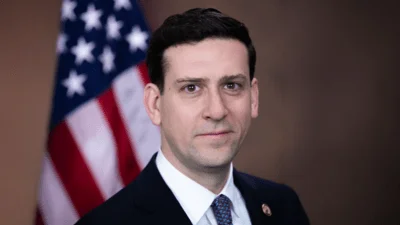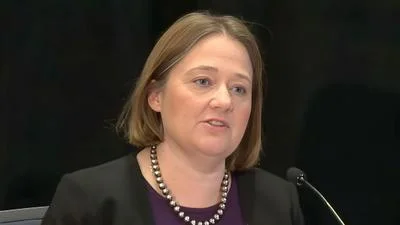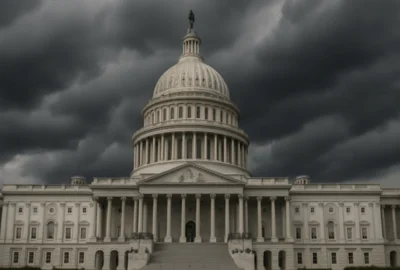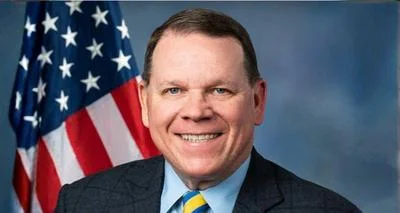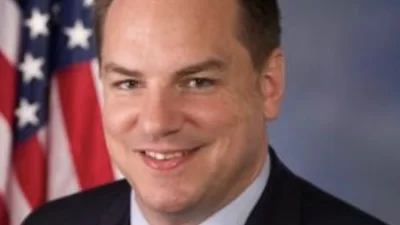Dear Secretary Geithner and Commissioner Shulman:
We are writing regarding the private debt collection program (PDC) that is being implemented by the Internal Revenue Service (IRS) and has been in place since 2006.
We are aware that many critics believe that the program does not operate effectively, and they lead an annual effort to strip the IRS of all authority to implement it. But we do not believe that the necessary data has been collected and disseminated that would allow an informed decision to be made about the program’s long-term effectiveness.
Make no mistake: If the program is genuinely unsuccessful, we would be among the first to concur that it should be terminated. However, we remain very concerned that IRS will terminate the PDC program before a complete and thorough accounting of the program is conducted. For example, while some are critical of the effectiveness and efficiency of the PDC program, we have yet to see solid, reliable numbers. Criticism of the program’s return on investment do not account for its start-up or investment costs,
and ignore the fact that the program has not been fully operational for any of its two years.
We appreciate that the IRS has decided to use an independent third party to study the effectiveness of the program, and its report may be issued as early as next week. But it is not clear that the new study will discuss ways to increase the efficiency and effectiveness of the PDC program or explain why similar programs at other federal agencies appear to be successful. For example, the Department of Education uses PCAs to collect student loan debt, and the Department of Treasury Financial Management Service uses them to collect small business loans, farm loans, and other similar debt owed to the federal government, and these programs appear to work well with little controversy.
Given the amount of uncollected tax debt, a program that was allowed to operate at full capacity would have the potential to be successful, yet the current program has only operated in fits and starts. In fact, during the past fifteen years, the Government Accountability Office (GAO) and the Treasury Inspector General for Tax Administration
(TIGTA) have issued numerous reports discussing the IRS’s problems in collecting delinquent debt. A list of these reports is attached. Some of the key findings include:
-- In its May 1993 report, New Delinquent Tax Collection Methods for IRS, the GAO highlighted the complexity of the IRS’s collection process. GAO presented a number of options to improve the IRS’s delinquent debt process, including establishing early telephone contact with debtors and utilizing private collection agencies. So there is a long track record indicating that a well-run PDC program could be successful.
-- In its June 2007 report, Tax Debt Collection: IRS Has a Complex Process to Attempt to Collect Billions of Dollars in Unpaid Taxes, the GAO description of the IRS’s collection process indicates that IRS has not experienced significant improvement in its collection function since 1993. The report also states that the total unpaid tax debt as of fiscal year 2007 was $290.1 billion, of which $184.8 billion was classified as non-potentially collectible inventory and $25.5 billion was deemed potentially collectible, but not in active collection status. This would seem to be further justification for a viable PDC program.
-- In its December 2008 report, Tax Administration: IRS’s 2008 Filing Season Generally Successful Despite Challenges, Although IRS Could Expand Enforcement During Returns Processing, the GAO notes that, because collections staff was reassigned to answer telephone calls regarding stimulus payments, the IRS reported $655 million in forgone revenue through August 2008 alone, which means that the number for the whole calendar year will likely be greater. If the IRS viewed the PDC program as part of its larger collection program, rather than a stand-alone program, PCAs may have been able to complete the work of the collections staff that had been temporarily reassigned.
It is important for critics of the program to recognize that the IRS’s PDC program is designed to go after tax debts that have been conceded by taxpayers, but not paid.
What’s more, even if the IRS enforcement budget were significantly increased, the accounts turned over to PDC are those that would still likely be ignored by IRS collection agents. In his May 2007 testimony before the Committee on Ways and Means,
Subcommittee on Oversight, Acting Commissioner Kevin Brown, confirmed that IRS would not otherwise pursue these debts even if IRS were given additional resources.
We remain cautiously optimistic that a PDC program could be successful in helping to close the tax gap, but only if it is allowed to operate at full capacity. Only after that point could a determination be made about whether the program is meeting its objectives. We are hopeful that the report being prepared will provide answers to the following questions. If not, we hope that you will take the time to let us know the following key information before the IRS makes any final decision about the PDC program:
-- The primary argument for terminating the IRS PDC program is that it is not cost effective. In order to better understand the program’s revenues and costs, we would like a monthly accounting of all funds expended on the program since its inception, including a breakdown of all costs for IRS personnel involved in administering the program (salary levels, positions descriptions, etc.), as well as costs associated with technology and travel.
-- We would also like to know the number of cases placed with the private agencies since the program began, including the number of cases for which the amount was collected in full, the number of resulting installment agreements, and the number of cases recalled and reasons for recall. We would also like an accounting of the commissions earned by the PCAs since the program started.
-- Some taxpayers choose to ignore the IRS’s many letters and respond to the IRS only after it notifies them that their cases will be referred to a PCA. In these cases, where the IRS benefits from the use of the PCA’s names, we would like to know why the PCAs are not compensated when those taxpayers settle those debts.
-- We would also like for you to describe how IRS’s collection process and procedure differs from the process and procedure used by PCAs in collecting IRS debts, including the IRS’s ability to make outbound phone calls, negotiate or settle tax debts, and impose liens and levies.
-- Another criticism of the program is that the IRS has run out of cases that can be assigned to the current PCAs, which is why other PCAs have not been added.
However, the exclusion list, which was not determined by statute but by the IRS,
appears fairly extensive. In addition, as noted above, the GAO’s June 2008 report indicates that, as of fiscal year 2007, there was at least $25.5 of potentially collectible inventory that IRS was not actively pursuing. We would like to know how each of the exclusion criteria was determined.
-- Tables 5, 6 and 7 of the GAO’s June 2008 provide a breakdown of the total delinquent debt for fiscal years 2002 through 2007. Please update these tables to add numbers for fiscal year 2008 and provide a breakdown of this amount by the exclusion criteria. We would also like to know why all potentially collectible inventory is not in active collection status and cannot be assigned to PCAs.
-- We would also like to know whether Treasury or any other agency has studied the cost effectiveness of the use of PCAs by Treasury or other federal agencies. If such studies are available, we would like to see them.
Finally, you may be aware that there are almost 200 jobs in both Iowa and New York that will be lost if the IRS PDC program is terminated prematurely. Given the current economic crisis, such job losses should not be forced to occur before a full accounting of the program’s success is made available and/or the program is allowed to operate as originally intended. The recently enacted Economic Recovery Act, which will further strain IRS resources, is an additional reason why the PCAs should be allowed to operate until the success or failure of the program can be definitively determined.
If you have any questions regarding the above, please do not hesitate to contact our staff. We also ask that you brief our staff on the forthcoming study before the study is finalized and made public.
Sincerely,
Chuck Grassley
United States Senator
Charles E. Schumer
United States Senator
Tom Harkin United States Senator
--------------------------------------------------------------
Contact:
Jill Gerber, Committee on Finance, Ranking Member Sen. Chuck Grassley, 202/224-
6522 Kate Cyrul, The Office of Sen. Tom Harkin, 202/224-3254 Brian Fallon, The Office of Sen. Chuck Schumer, 202/224-7433
Attachment:
Collection & Private Debt Reports2.xls

